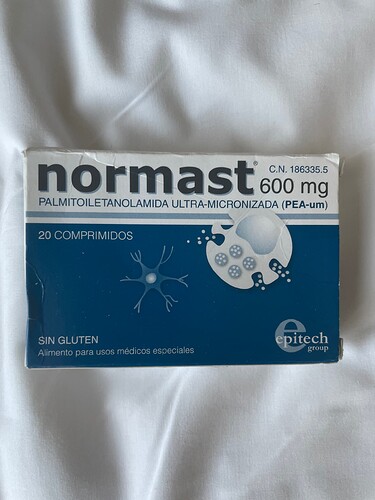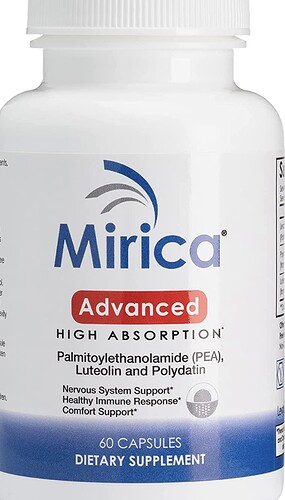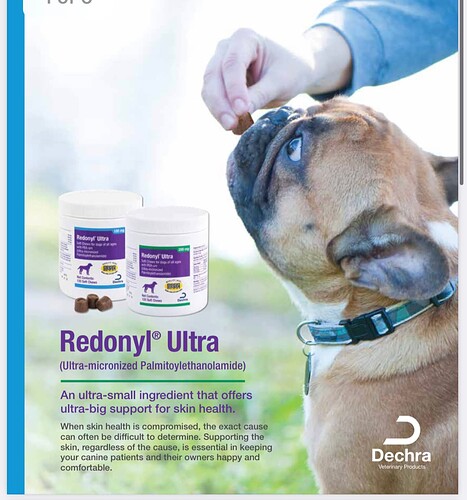Hi,
Nice forum here. I am very fascinated by all the intelligent posts and am fascinated with this field. 44 Year Old Male- good health, slight trend towards pre-diabetic (lowest point of “high range” on bloodwork), not obese but certainly could stand to lose 5-10 pounds, not very active (working on it :), Bio-Chemist (pharmacologist)
- 9mg of Rapamycin weekly
- 500 mg Metformin 2x daily because of pre-diabetic scare and to reduce and protect against further Insulin Resistance from Rapamycin
- Ultra-Micronized Palmitoylethanolamide (PEA) 300-600mg 2x daily, 3 weeks off every 2 months
Been on Rapamycin since I was 40 (44 now so 4 years)- began at 6mg weekly, Metformin for 1 year now, and PEA for 2 years
Positives: Much more energy, better sleep, rarely ill despite poor diet, much more scalp hair (thicker as well), improved skin elasticity, collagen production, appearance
Negatives: Possible cause of Insulin Resistance, Soft tissue Staph infections around chin area periodically- cultured methicillin susceptible treated with 1st generation Cephalosporin and Bactroban Ointment
I feel that Palmitoylethanolamide, an endogenous fatty acid amide that primarily works via the PPAR-alpha receptor, Orphan Cannabinoid Receptor, and by partially inhibiting FAAH which metabolizes Anandamide (AEA)- endogenous CB1 receptor agonist similar to THC in effects but breaks down to quickly to demonstrate psychoactive effects- keeping AEA active, and the molecule’s ability to stabilize Mast Cells (filled with pro-inflammatory compounds Cox-2, PDG2, histamines, cortisol, serotonin) from bursting open and releasing these agents should be considered part of the legitimate longevity agents as well.
PEA reduces pro-inflammatory cytokines in the blood, is an immunomodulator, reduces cholesterol and triglyceride levels (dropped my total levels by 55% and 59% respectively in 12 months with no change in dietary habits).
See Study below where administration of PEA significantly reduced inflammation and extended survival in aged mice with bacterial meningitis.
PEA is not-psychoactive and readily available but I would highly recommend the “Micronized” form. The molecule itself has shown itself to be too large to be well dispersed throughout the body when taken orally, so pulverized through a jet-mill, the particles are small enough to show greater absorption in tissues and blood.
Unless you happen to be in Italy or Spain (where Ultra Micronized PEA is available OTC and cannot be patented) it is tougher to find as FSD Pharma bought the world patent rights to this even further pulverized version, showing the greatest absorption and bioavailability in the body and is currently testing UM-PEA in clinical drug trials.
Moreover, no soft-tissue infections in the 2 years since I began using it. Not sure if coincidence or the PEA.
Looking forward to being part of this forum and reading about all your experiences and new advancements:
“…We have shown that exogenous PEA promotes pathogen uptake by microglial cells in young animals without the concomitant release of pro-inflammatory mediators that contribute to brain damage in bacterial meningitis. During aging, senescent dysfunctional microglia acquire a chronic pro-inflammatory phenotype. Primed/reactive microglial cells amplify and prolong inflammation upon infection, and exacerbate neurocognitive disability in elderly patients…”


 PEA (Micronized, Ultra Micronized, or topically with correct delivery system as an anti-aging drug.
PEA (Micronized, Ultra Micronized, or topically with correct delivery system as an anti-aging drug.